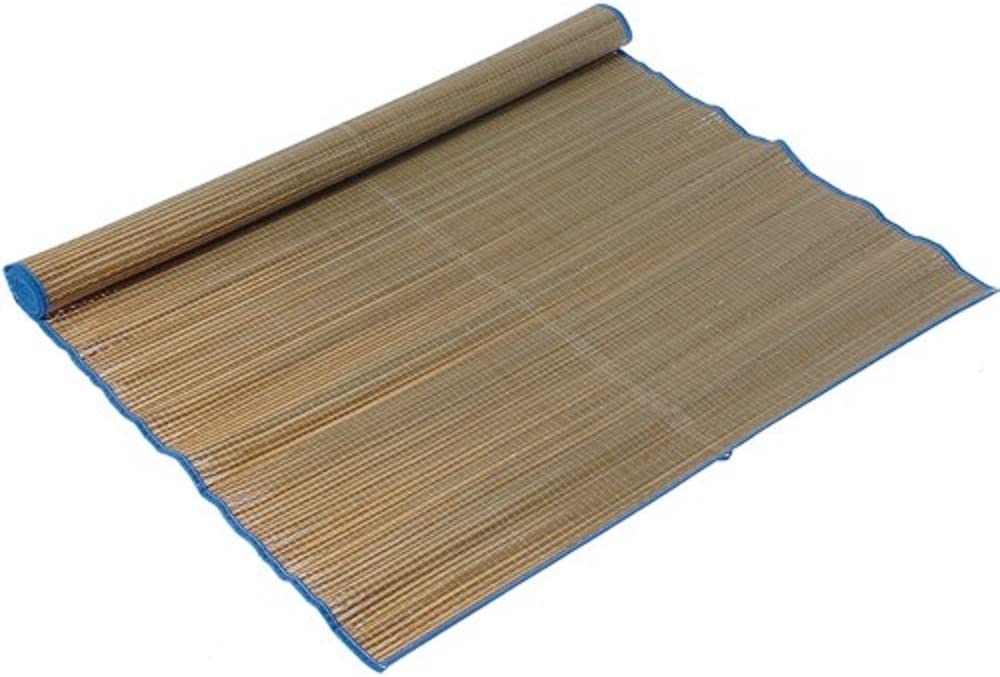As we have already mentioned in other articles on this site, sand-free beach mats have really grown in popularity in recent years as more and more beachgoers aim to keep their personal belongings clean and free of any sand and dirt.
However, as with all outdoor products, it is always worth considering the environmental impact of these products, particularly as this is an issue that is close to many people’s hearts.
So let’s take a look at the environmental impact of these sandless beach mats, and discuss how eco-friendly they actually are in reality.
Materials
First of all it is worth discussing the actual materials that are used to produce these sand-free beach mats. In general, they will often be made from synthetic materials such as nylon, polyester or polyurethane, which do offer certain benefits. For instance, they will often be durable, lightweight and resistant to sand and water.
The drawback is that they may be derived from fossil fuels, and are not necessarily biodegradable. When these products are discarded, they can contribute to litter and pollution if thrown out or left behind on a beach somewhere, and will not break down in the natural environment.
Production Process
The production process that goes into making sand-free beach mats is another issue that may concern some people. When synthetic materials are produced, it requires resources and energy, and this can obviously contribute to greenhouse gas emissions and increase pollution. There may also be chemicals used in this process, which can often be damaging to the environment.
Thankfully, not all sand-free beach mats are made from synthetic materials. There are some that are specially designed to be as eco-friendly as possible, and will often be made from more natural materials, such as bamboo, for instance.

A few companies have even made use of recycled plastic bottles to create a unique eco-friendly outdoor beach mat that families can enjoy using when they go to the beach without feeling any guilt.
The point is that not all sandless beach mats are produced in the same way. Some are more harmful to the environment than others, while others are much more eco-friendly.
For instance, with regards to chemicals, some companies will treat their mats with extra chemicals or an extra coating to repel sand, which could be harmful to fish and marine life if one of these mats ends up in the sea, having been left abandoned on a beach.
Positive Environmental Benefits
Even if they do make use of chemicals in a small way, or do have certain others drawbacks such as those mentioned above, just the very nature of a sand-free beach mat ensures that they do have some positive effects on the natural environment.
Their unique design will help to repel sand and dirt from both the mat and any personal belongings that are nearby, ensuring that more of the sand stays on the beach where it belongs, which obviously benefits all of the coastlines.
It also encourages families to relax and spend more of their free time at the beach, knowing that they will have a more pleasurable experience lying on a beach mat that is free of any sand and dust. By engaging with nature more, people will be inclined to help to protect this wonderful natural environment of ours.
Final Thoughts
As you can see, there are pros and cons of sand-free beach mats when it comes down to their overall environmental impact. In some ways they could automatically be considered eco-friendly to some extent because of the benefits that they provide.
In addition, some of these products will even be made from eco-friendly materials that are less harmful to the environment.
Nevertheless, there are certain issues that cannot be ignored. The production process used to produce these beach mats and the fact that many of these products will not break down in the natural environment are points to consider when buying one of these outdoor products.
So ultimately it is down to consumers to take all of these issues into consideration if they are concerned about potentially damaging the environment even more with their choice of beach mat, whilst also ensuring that any sand-free beach mat that they do end up buying is properly disposed of when no longer needed, and isn’t left abandoned on a beach, either intentionally or unintentionally.